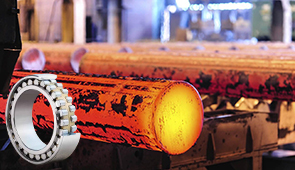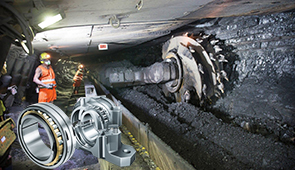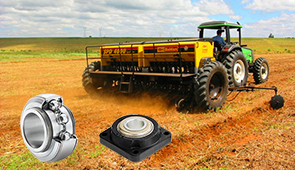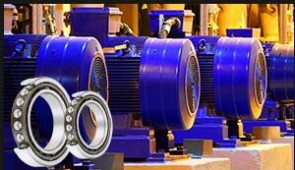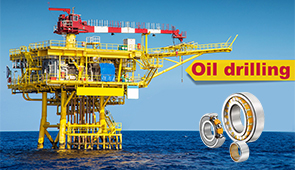Lubricating Oil Uses: Understanding Types of Lubricants and Their Applications
Lubricating oils are vital in maintaining machinery for smooth operation and longevity, spanning multiple industries. Be it automobile engines, heavy machinery, or fine precision instruments, the right kind of lubricant aids in smooth operation, wear reduction, and optimization of performance. Discussing the different types of lubricants, their unique properties, and their application-related considerations, the article gives weight to the choices that go behind selecting the best lubricating oil suitable for a particular industry, ensuring enhanced performance and less downtime. We will venture through synthetic blends into mineral oils, traversing the technicalities and applications of this fundamental industrial product.
What is Lubricating Oil?
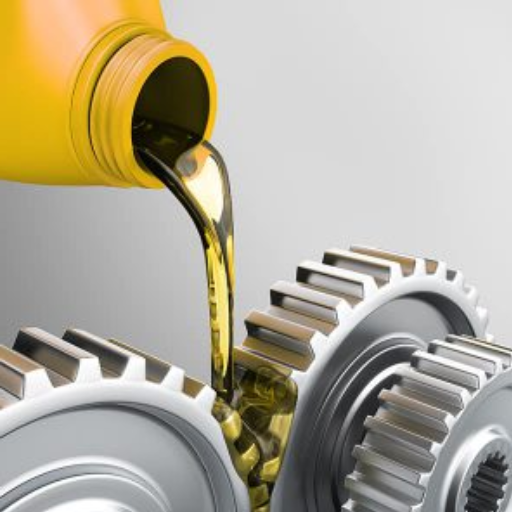
Definition of Lubricating Oil
Lubricating oil is a substance chiefly applied to diminish friction, thermal generation, and wear occurring between mechanical components in contact. It forms a thin film to separate moving surfaces, which may directly come into contact, thus causing energy loss and wear. This must-have property serves to make machines work efficiently and prolong their working life.
In the formulation of lubricating oils, generally, a base oil is used, which may be mineral, synthetic, or a blend of both, together with several additives. The base oil is responsible for lubrication, while additives impart characteristics such as resistance to oxidation and rust, resistance to viscosity change, and resistance to contamination. Lubricating oils are formulated to suit machines and operating environments.
Prized in several industries, the production and utilization of lubricating oils find some of their important applications in the automobile, manufacturing, aerospace, and energy industries. For instance, in automotive engines, lubricating oil keeps the engine running smoothly by reducing friction between the parts inside, absorbing heat, and carrying away dirt. To emphasize this, a machine without proper lubrication will not only run inefficiently but will also allow parts to wear and thus break down within a short period.
Chemical Composition of Lubricating Oil
The composition of lubricating oil consists essentially of base oils and additives enhancing performance. In general, base oils amount to somewhere between 70% and 90% of the volume of the lubricant. They come either from mineral sources such as refined crude oil or are synthetic, produced through chemical processes that afford the highest degree of uniformity in molecular structures. When speaking of physically measured properties such as viscosity, thermal stability, and oxidation resistance, the choice of a base oil is a decisive factor.
In contrast are additives that lubricating oils contain in order to adjust certain properties and maximize their working conditions. Such additives are antiwear agents, detergents, dispersants, antioxidants, or viscosity index improvers. Antiwear agents, like zinc dialkyldithiophosphate (ZDDP), protect moving parts by acting as a sacrificial layer on metal surfaces. Detergents and dispersants work to prevent the formation of sludge and deposits by neutralizing acidic by-products and allowing contaminants to remain suspended in the oil.
Viscosity index improvers keep the lubricant’s viscosity normal along broad changes in temperature, and antioxidants boost the oil craft resistance toward oxidation, thereby lengthening the lifetime of the lubricating oil. These ingredients are blended based on certain applications to procure lubricants, from those used for high-performance automotive engines to those usable for industrial machinery, ensuring the smooth functioning, durability, and dependability of machines in their operational settings.
How Lubricating Oil Functions
A lubricant in the form of oil is a separating substance that reduces friction and wear between two interfacing surfaces in a machine or engine. It forms an oil film between surfaces in contact to avoid metal-to-metal contact, thereby reducing energy loss; hence, prolonging the service life of the equipment. This also enhances working efficiency and gives some protective coating to avoid premature degradation of the system.
Another important function of the lubricating oil is cooling. Mechanical systems generate heat during operation due to friction and combustion. The oil picks up the heat and removes it from areas where it can cause damage, thus preventing overheating and preserving the oil from damage itself.
Also, lubricating oils keep dirt, dust, and metallic particles from settling. The additives in the oil hold these particles so the filter can take them out. This cleaning action can keep promised performance by minimizing damage created by abrasive materials and ensuring a cleaner working environment.
Types of Lubricants and Their Characteristics
Different Types of Lubricants
Lubricants are traditionally classified into a few key groups by composition, use, and performance characteristics. These categories include:
- Mineral Oil-Based Lubricants: These lubricants are extracted from crude oil through refining and are perhaps the most popular simply because of their affordability and multipurpose use. They suffice for general industrial and automotive lubrication. However, they depreciate in performance rather fast under extreme temperatures or high pressures when compared with their synthetic counterparts.
- Synthetic Lubricants: Oil molecules are chemically modified to render the lubricant a much wider range of performance characteristics, temperatures, and working conditions. They offer good thermal stability and resistance to oxidation, hinder flow at the coldest temperatures, and thus find the greatest use in high-performance engines, aerospace applications, and harsh working environments.
- Semi-Synthetic Lubricants: They consist of combinations of mineral oils and synthetic base stocks and thus provide an equally appropriate crossbreed between cost and performance. From their slightly higher thermal stability to almost double the protection when compared to straight mineral oil, semi-synthetics find their use in a greater number of instances, ranging from motorcycles to light industrial machinery.
- Biodegradable Lubricants: Biodegradable lubricants come from the renewable source of vegetable oils and serve as a friendly alternative. Hence, these oils are designed to undergo natural degradation, thereby resulting in minimal environmental impact. Such lubricants can be of great use in industries where there might be a possibility of environmental exposure, such as agriculture, marine, and forestry.
- Greases: Grease is a semi-solid lubricant consisting of one base oil, a thickener, and suitable additives. They are usually lubricated in applications requiring long-term lubrication. Typical application involves bearings, gears, and bushings-where liquid lubricants cease to work effectively. Greases work by staying put and protecting in high-pressure and adverse environmental conditions.
- Solid Lubricants: In opposition to liquid or semi-liquid foundations-solid lubricants, such as graphite, molybdenum disulfide, or PTFE (Teflon), work well under dry conditions or in a high vacuum. They serve aerospace mechanisms, precision instruments, and extreme-temperature environments, where normal lubricants are rendered ineffective.
The choice of the right lubricant requires a good knowledge of operating conditions: load, temperature, speed, and environment. Recent advances in lubricant engineering, promising efficiency, durability, and environmental friendliness in lubricants, include nano-enhanced oils and advanced synthetic formulations.
Oil vs. Grease: Key Differences
Oil is liquid, flows freely, has better cooling, and is suited to high-speed applications; grease is semi-solid, stays put, seals out contaminants, and finds use with heavy loads or intermittent duty.
|
Aspect |
Oil |
Grease |
|---|---|---|
|
Form |
Liquid |
Semi-solid |
|
Movement |
Flows freely |
Remains fixed |
|
Heat Control |
Excellent |
Limited |
|
Barrier |
Minimal |
Strong |
|
Purpose |
High-speed |
Heavy-load |
|
Upkeep |
Frequent |
Less frequent |
|
Protection |
Limited |
Effective sealing |
|
Scenarios |
Continuous systems |
Intermittent use |
Understanding Additives in Lubricating Oils
Additives in lubricating oils improve the performance of the base oil so that it can meet the stringent requirements of various industrial and automotive applications. Chemical additives are selected and formulated to improve specific properties or impart new properties to lubricants. The major types of additives are:
- Viscosity Modifiers: These additives enable the oil to maintain an optimum viscosity over a wide temperature range and hence to perform well at both high- and low-temperature environments.
- Anti-wear additives: Under conditions of high pressures and boundary lubrication, anti-wear agents form a protective layer on the surface to prevent metal-to-metal contact, hence reducing wear extensively and increasing equipment life.
- Detergents and Dispersants: These two act in unison against the formation of deposits and sludge. Detergents get rid of acidic by-products, whereas dispersants suspend the contaminants, keeping the surfaces clean.
- Oxidation and Thermal Stability Enhancers: Introduced to counter the effects of high operational temperature, these additives guard against the formation of potentially corrosive oxidation products, thus extending the oil life at the same time as preventing corrosion of the system.
- Corrosion and Rust Inhibitors: They prevent the corrosive action on metal surfaces by forming a protective barrier, especially under humid conditions or in the presence of water.
- Antifoams or Foam Suppressants: The air bubbles get into the lubricant and hamper lubrication, hence causing system malfunction. Preventing foam formation, anti-foam additives ensure smooth oil flow.
- Friction Modifiers: This class of additives improves fuel economy and smoothness of operation by modifying the frictional properties of treated surfaces and is particularly important in automotive applications.
By balancing the types and amounts of these additives, lubricant manufacturers are able to custom formulate oils to meet specific operational needs that pose extreme conditions in pressure, thermal loading, and environment. Thus, such specialty lubricants ensure that mechanical systems are not only well protected but also run at their peak efficiency and long life.
Primary Uses of Lubricating Oil Across Industries

Automotive Lubricants: Engines and Transmissions
Auto oils are essential for ensuring engine and transmission efficiency and reliability under various operational circumstances. Engine oils, which consist of mixtures of base oils and additives, are created to reduce friction between moving surfaces, protect the moving parts against wear, and dissipate heat adequately. The additive packages containing various agents such as anti-wear additives like zinc dialkyldithiophosphate (ZDDP), detergents to prevent deposit formation, and corrosion inhibitors to avoid internal corrosion make the oil truly efficient.
In transmission systems, however, lubricants encounter their series of challenges, which include managing heavy pressure, preventing heat build-up, and allowing for smooth shifts. Automatic Transmission Fluids (ATF) are usually formulated with advanced friction modifiers to produce smooth gear changes and maintain requisite hydraulic conditions. In contrast, manual transmission oils are more viscous and have load-carrying properties to prevent wear and deformation of gears under severe stresses.
The periodic advancement and improvement in lubricant technology, such as the production of fully synthetic oils, enhance the durability and operational efficiency of the newer products. Also, it aids in saving fuel, thereby contributing less to pollution, and extends the intervals for maintenance, which are all recent trends to save the environment and energy costs in the automotive field.
Manufacturing Applications: Machinery and Equipment
Technological advancements in materials and precision machining help to improve the reliability, maintainability, efficiency, and life span of equipment and machinery. High-performance alloys, carbon fiber composite materials, and advanced ceramic materials are among the innovations that materials and manufacturing can deliver to fabricate components with excellent durability and tolerance to harsh environments.
One of the development fronts is additive manufacturing (AM), otherwise known as 3D printing. This allows designers to make the most intricate of customized parts with minimal waste, thereby bringing down the production cost. For example, AM helped manufacture lightweight gear assemblies that retain their structural integrity when subjected to high stress.
Other critical trends include Industry 4.0 technologies such as IoT sensors and ML algorithms, furnishing the machinery with real-time monitoring to predict failures. This predictive maintenance reduces machine downtime to almost close to zero, promoting operational efficiency. Alongside automatic systems integrations like robotic assembly lines, manufacturing has reached the highest accuracy and speed levels.
Deepening the state-of-the-art use of machinery innovations are high-performance coatings and lubricants, bringing machinery endurance to a new level of development. Such coatings resist corrosion, abrasion, and thermal shock, effectively extending the machine’s lifetime. Whereas collectively, such developments set a tectonic prominence at the merging points of materials science, engineering, and digital technology in the modern-day manufacturing industry.
Aerospace Industry: High-Temperature Lubricants
In the aerospace industry, high-temperature lubricants find their way, operating under extreme thermal, mechanical, and environmental stresses. These lubricants were designed to maintain stability, reduce friction, and prevent wear at temperatures exceeding 600°F (315°C). The lubricants need to perform at jet-engine, turbine component, and spacecraft mechanism levels where the traditional lubricant degrades and causes its components to fail.
The advanced formulations may use synthetic base oils like polyol esters or perfluoropolyethers, with additives such as molybdenum disulfide or graphite to improve viscosity and thermal resistance. Nano-lubricants came in and boosted effectiveness further by eliminating friction at the molecular level, so energy loss decreases, and critical assemblies stand longer. These modern advances bolster system reliability in extreme conditions, like deep space expeditions or high-altitude flights.
The introduction of high-temperature lubricants shows the increasing tech capabilities of aerospace while also having to satisfy durability and safety standards. From an economic perspective, these lubricants allow the equipment to withstand greater wear and tear until maintenance is needed, thus making the biggest contribution to the operational profitability of modern aerospace applications and strengthening their importance as a resolving technological innovation.
Benefits of Using Lubricating Oil

Reducing Friction and Wear
This movement of lubricant oil in the frictional process is theorized from a technical point of view as forming layers between the moving surfaces. The layers help keep two opposing metal surfaces at some distance from each other or prevent metal-to-metal contact; therefore, they lessen the frictional coefficient; large friction would have developed heat and extreme temperatures. Decreasing friction increases the life of parts and empowers optimal working of mechanical systems, which is of utmost importance in aerospace and heavy machinery.
Also, these lubricating oils are packed with additives like antiwear, detergents, viscosity modifiers, etc. Chemical action produced by these additives aids in protecting surfaces under severe load and temperature conditions. An anti-wear agent will react with the metal surface to produce a microscopic reactive film, giving added protection from abrasion and surface wear. Such must also be engineered with the greatest level of detail to ensure that, under the most severe situations, wear and tear will be limited.
From my standpoint, I am of the opinion that lubricating oil in a mechanical system is among the most technically advanced and cheap ways of dealing with operational inefficiencies. By cutting down the maintenance rate, reducing power consumption, and maintaining system reliability, it stands as the most valuable asset for any industry. To me, appreciating how lubricating oils do these things makes them the key factor for the establishment of modern engineering.
Enhancing Efficiency and Performance
This is because lubricating oils are supposed to mainly reduce friction and wear of the moving parts in mechanical systems. This reduction in friction, in turn, results in enhanced efficiency in the process due to the inherent energy losses associated with any mechanical motion. Lubricants today are made with additive technologies that enhance durability under extreme conditions-high temperature, heavy load, and presence of contaminants.
According to vast industrial data, a well-formulated lubricant can extend equipment life by 30%, reduce chances of unexpected downtime by 40%, and reduce energy consumption by 10%. These numbers show measurable performance improvements contributed by specific lubrication strategies in various industries like manufacturing, transportation, and energy production. Synthetic lubricants, for instance, help optimize gearbox function and sustain turbine reliability under high stress in wind turbine systems; this improvement translates directly into lowered operational costs and increased energy efficiency.
To reap these benefits, one must follow a disciplined lubrication program integrated with condition monitoring systems. Analysis techniques such as oil analyses track viscosity, contamination, and degradation parameters, which are necessary for conducting predictive maintenance and further extending equipment life. Following such advanced practices lets industries gain sustainable performance, thus emphasizing the role of lubricating oils in today’s engineering ecosystem.
Extending Equipment Longevity
Extending the operational timespan for equipment calls for an interdisciplinary approach comprising contemporary technology, stringent maintenance policies, and decision-making in accordance with data. Condition monitoring systems provide a constant assessment of machine healthworthiness through parameters such as vibration, temperature, and acoustic emissions. This data is used for predictive maintenance, where failures are predicted before they occur, decreasing incidences of downtime and costs of repair.
Another factor able to support machine life is the careful selection and application of high-quality lubricant, taking into consideration the specific operating conditions of the machine. Modern lubricants are formulated with engineered additives against friction, corrosion, and thermal degradation: all forms of wear. The application of filtration systems is also considered sufficient to remove dirt, moisture, and other contaminants that may compromise the lubricant and the components.
Industries are also using IoT-based tools and machine learning algorithms for optimizing maintenance schedules. These technologies continuously process both historical and real-time operational data for pertinent insights about machine performance and suggested measures. The combination of such an approach could result in not only a reduction in downtime-related loss but also meeting cost-reduction and sustainability objectives at a larger scale.
Choosing the Right Lubricating Oil

Factors to Consider: Viscosity and Environment
While choosing the lubricating oil to be applied, viscosity is one of the most important parameters to examine. The possibility of forming an oil film between moving parts greatly depends on the viscosity of the lubricant: film of oil prevents friction and wear. In the case of high speeds, a low-viscosity oil may be granted to flow and lubricate freely, whereas under high load and slow-moving conditions, a higher viscosity is given to hold up the film against pressure.
Also, environmental factors play a crucial role in deciding the best lubricant. Operating temperature ranges may have some good influence on oil performance; for example, extremely cold conditions may require lubricating oils with low pour points, so that they can flow well, whereas hot temperatures require oils that are thermally stable to stop rapid oxidation and break down. Contaminants, humidity, water, and debris presence also need to be considered during selection so as to secure long-term operational efficiency and reliability for the equipment.
These manifestations of practicalities integrate with modern monitoring tools to empower real-time adjustments, ensuring that lubrication aligns with performance optimization metrics.
Matching Lubricants to Machinery Types
Selecting the proper lubricant for different machinery types very much depends on extensive knowledge of operational parameters, material compatibility, and environmental conditions. Different machinery types function under different load, speed, and temperature conditions and thereby require a different lubrication approach. For instance, high-speed machinery like turbines requires oils with very low viscosities and good thermal stability, while heavy-duty equipment such as industrial presses needs a high-viscosity lubricant capable of withstanding high-pressure.
Modern tribology and predictive analysis have contributed new data-driven methodologies for improving lubricant selection. By leveraging computational tools to model tribological interfaces, operators can predict wear patterns, quantify friction coefficients, or identify those lubricant formulations most able to reduce the effects of particular wear mechanisms. Alternatively, with such systems in place, one can monitor lubricant performance continually in real-time using integrated sensors coupled to an analytics platform to pinpoint inefficiencies or potential lubricant contamination issues well before the onset of critical failures.
The combination of viscosity standards according to ISO with base oils according to classification (synthetic versus mineral) and additive composition data leaves the finest processing. Hence, industry could link lubricant specifications more precisely to its machinery performance targets for decreased breakdowns and higher reliability.
Common Mistakes to Avoid When Choosing Lubricants
- Ignoring Manufacturer Specifications: A critical mistake in the selection of lubricants is to overlook the equipment manufacturer’s specifications. The OEM specifications give detailed requirements for lubricant viscosity, type of base oil, and compatibility of additives. The worry is that grease or oil failing to meet OEM specifications may cause improper lubrication, thus causing more wear and early breakdown in the machinery.
- Overlooking Operating Environment: The other common mistake is overlooking operating conditions such as temperature, relative humidity, and the presence of contaminants. For instance, equipment working at high temperatures requires lubricants with superior oxidation stability; those working in dusty or wet environments require a lubricant that resists water and contamination.
- A Single Lubricant for All Applications: Even though implementation of consolidation programs appears to decrease costs, a one-product-fits-all approach impairs adequate lubrication and creates inefficiencies. For example, hydraulic fluids, oils for gearboxes, and bearings, on the other hand, feature distinct characteristics in terms of viscosity, additive package, and formulation for their functionality and working stresses.
- Misinterpreting Viscosity Requirements: Choosing inappropriate viscosity grades can lead to performance problems. Viscosity grades that are too high for the intended service may cause excessive power loss and overheating, while low viscosity grade lubricants may otherwise fail to provide enough film strength to avoid wear and scuffing. The right selection of viscosity for a lubricant is very much dependent on a combination of operative speed, operative load, and temperature.
- Forgetting Oil Analysis and Lifecycle Assessment: Not performing oil analysis under conditions and lifecycle analyses in time means that one never detects early degradation and contamination. By this, it might be that the changeover intervals become longer to such an extent that varnish appears, sludge builds up, or there is a complete catastrophic failure of the equipment due to breakdown of the lubricant.
- Underestimating Additive Requirements: Not all lubricants are alike in terms of the additive packages. Additives are required to enhance properties such as anti-wear, corrosion protection, and oxidation inhibition. Selecting a lubricant that has improper or insufficient additive content for a given application is detrimental to durability and efficiency.
- Choosing Price Instead of Performance: The big enough upfront cost saving will yield colossal and unplanned expenses owing to downtime, repairs, and replacements. A good-grade-lubricant-on-the-other-hand- han, is more costly initially but will significantly reduce the total life-cycle cost through enhancing operational efficiency and reliability.
Avoiding is are meticulous selection of lubricant specifications, precise knowledge of operating requirements, adherence to good maintenance, and monitoring means. Interspersing these factors should ultimately lead to maximum performance, extended equipment life, and reduced costs for maintenance in any application across industry.
Frequently Asked Questions (FAQ)
Q: What are the primary uses of lubricating oil in automotive engines?
Q: How does lubricating oil reduce friction?
Q: What are the types of lubricating oils commonly found in machinery?
Q: What is the benefit of using synthetic oil?
Q: What is the significance of additives in lubricating oil?
Q: What things should I consider in choosing the right lubricating oil for my engine?
Q: How often should I change my engine oil?
Q: Can lubricating oil be used through automatic transmissions?
Q: What are the functions of oil viscosity and temperature in lubrication?
UCTH213-40J-300 with Setscrew(inch)
CNSORDERNO: Normal-duty(2)
TOGN: UCTH213-40J-300
SDI: B-R1/8
SD: 2 1/2
UCTH212-39J-300 with Setscrew(inch)
CNSORDERNO: Normal-duty(2)
TOGN: UCTH212-39J-300
SDI: B-R1/8
SD: 2 7/16
UCTH212-38J-300 with Setscrew(inch)
CNSORDERNO: Normal-duty(2)
TOGN: UCTH212-38J-300
SDI: B-R1/8
SD: 2 3/8
UCTH212-36J-300 with Setscrew(inch)
CNSORDERNO: Normal-duty(2)
TOGN: UCTH212-36J-300
SDI: B-R1/8
SD: 2 1/4
UCTH211-35J-300 with Setscrew(inch)
CNSORDERNO: Normal-duty(2)
TOGN: UCTH211-35J-300
SDI: B-R1/8
SD: 2 3/16
UCTH211-34J-300 with Setscrew(inch)
CNSORDERNO: Normal-duty(2)
TOGN: UCTH211-34J-300
SDI: B-R1/8
SD: 2 1/8












